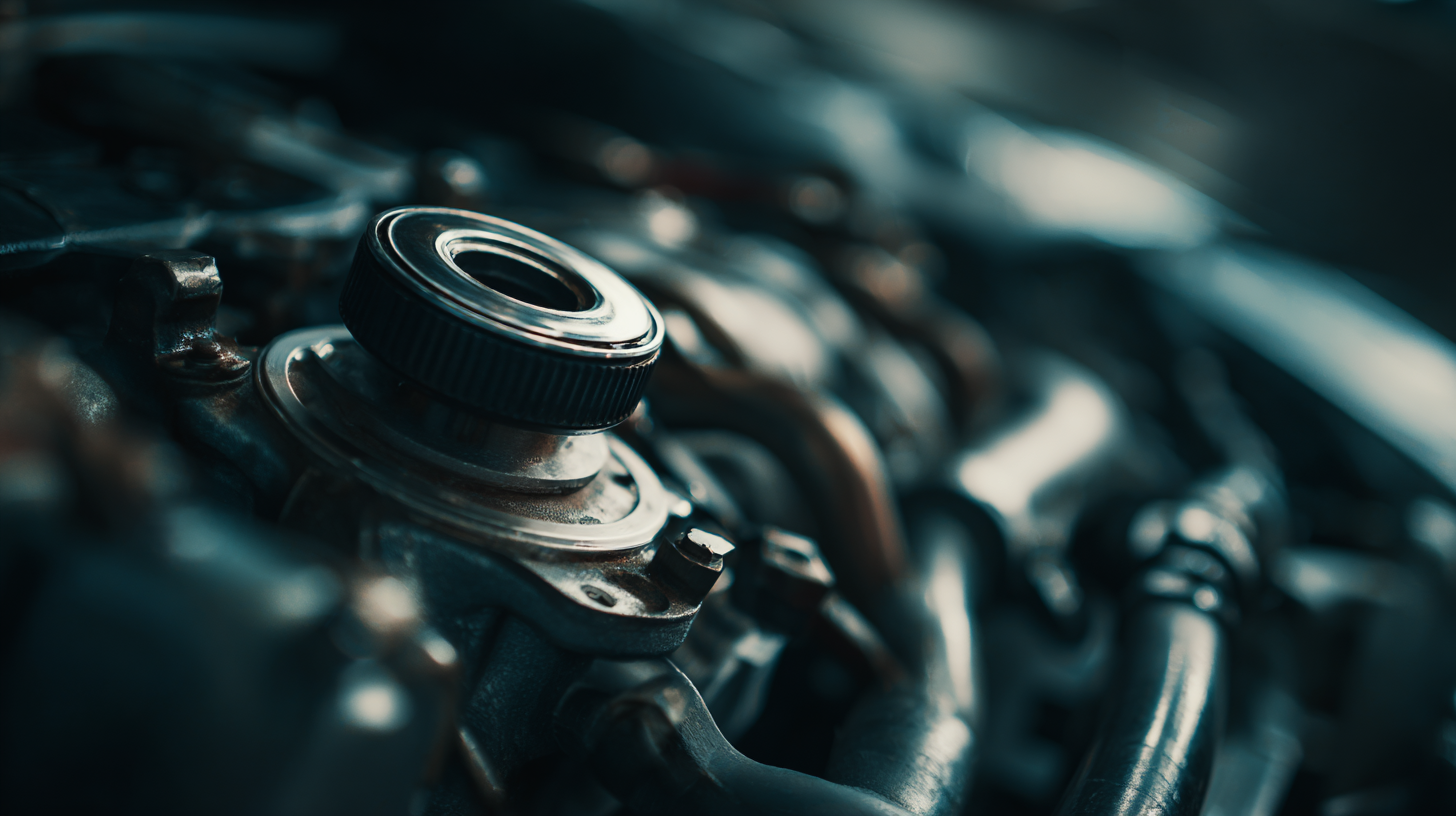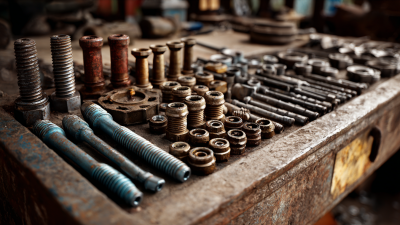Leave Your Message
-
Phone
-
E-mail
-
WhatsApp
In the realm of vehicle maintenance, the significance of utilizing Genuine Parts cannot be overstated. Studies indicate that approximately 70% of vehicle owners opt for aftermarket components, often underestimating the potential repercussions of such choices. According to a report by the Automotive Industries Association, using genuine OEM (Original Equipment Manufacturer) parts can enhance vehicle performance and longevity by as much as 30%. Additionally, genuine parts are specifically designed to meet rigorous safety standards, providing peace of mind to drivers.

This article delves into the importance of choosing Genuine Parts for your vehicle maintenance, exploring both the cost-effectiveness and the long-term benefits of investing in quality over alternatives. By understanding the real value behind using genuine components, vehicle owners can make informed decisions that safeguard their vehicles against the risks associated with subpar aftermarket products.
Using imitation vehicle parts may seem like a cost-effective solution for vehicle maintenance, but the risks involved can far outweigh the initial savings. Imitation parts often lack the quality and reliability of genuine components, leading to potential failures that could compromise vehicle safety. For example, a counterfeit brake pad might not provide the necessary stopping power, increasing the chances of accidents. Additionally, the fit and functionality of these imitation parts may not align with your vehicle's specific design, resulting in further mechanical issues down the line.
Moreover, using imitation parts can void warranties and lead to additional financial burdens. Many manufacturers stipulate that only genuine parts be used during repairs and maintenance to keep warranties intact. If a vehicle owner opts for imitation parts and runs into subsequent problems, they may find themselves responsible for costly repairs that could have been covered. The long-term implications of using substandard components highlight the critical importance of investing in genuine parts, as they ensure not only optimal performance but also the safety and longevity of the vehicle.
This chart illustrates the failure rates of genuine parts versus imitation parts. Genuine parts have a significantly lower failure rate of 5%, while imitation parts have a much higher failure rate of 30%. This data underscores the importance of using authentic components to ensure vehicle safety and reliability.
When it comes to vehicle maintenance, distinguishing genuine parts from counterfeit ones is crucial not only for performance but also for safety. According to a report by the Automotive Aftermarket Industry Association (AAIA), nearly 20% of vehicle parts sold in the aftermarket are counterfeit. These imitation parts often lack the quality and durability required for optimal vehicle operation. Therefore, understanding what to look for in genuine parts is essential for vehicle owners aiming to prolong the life of their vehicles and maintain their performance.

One key indicator of genuine parts is the packaging. Authentic components typically come in high-quality packaging with clear branding, part numbers, and manufacturer information. Additionally, look for security features such as holograms or unique serial numbers, which are often missing on counterfeit products. According to a 2021 study by the International Organization for Standardization (ISO), using genuine parts can enhance vehicle reliability by up to 40%, significantly reducing maintenance costs over time. By investing in verified components, car owners can ensure better compatibility and improved function, thus safeguarding their investment in the vehicle.
 When it comes to maintaining your vehicle, using genuine parts is crucial for long-term performance. Genuine parts are designed specifically for each vehicle make and model, ensuring optimal fit and function. According to a report by the Automotive Aftermarket Industry Association, vehicles using genuine parts experience 27% fewer mechanical failures compared to those using aftermarket alternatives. This statistic highlights the reliability that comes with investing in authentic components.
When it comes to maintaining your vehicle, using genuine parts is crucial for long-term performance. Genuine parts are designed specifically for each vehicle make and model, ensuring optimal fit and function. According to a report by the Automotive Aftermarket Industry Association, vehicles using genuine parts experience 27% fewer mechanical failures compared to those using aftermarket alternatives. This statistic highlights the reliability that comes with investing in authentic components.
Furthermore, genuine parts often come with warranties that aftermarket parts typically lack. A recent study published in Consumer Reports found that vehicles using genuine parts had a 20% lower likelihood of facing major repair costs over a five-year period. This not only saves money in the long run but also ensures that your vehicle retains its value. In the realm of resale, potential buyers are more inclined to purchase a vehicle that has been maintained with genuine parts, as it reflects a commitment to quality and reliability. By prioritizing genuine parts, vehicle owners can secure their investment and enhance performance over time.
When it comes to sourcing genuine parts for your vehicle, knowing where to look is essential for safe purchasing. Start by visiting authorized dealerships that provide parts specifically designed for your make and model. These dealerships often have certified technicians who can assist you in selecting the right components, ensuring compatibility and high quality. Additionally, purchasing from a reputable dealership often comes with warranties, providing peace of mind in case an issue arises.
Online platforms can also be a source for genuine parts, but caution is critical. Always verify the credibility of the website and check for customer reviews. Look for sites that provide clear descriptions of the parts and their origin, as well as options for returns if the items are not what you expected. Lastly, consider utilizing manufacturer resources or forums dedicated to your vehicle type; they can provide insights on trusted sources and help you connect with other vehicle owners who have successfully purchased genuine parts.
| Part Type | Signs of Genuine Parts | Where to Source | Tips for Safe Purchasing |
|---|---|---|---|
| Brake Pads | Proper branding & quality finish | Authorized dealerships, certified retailers | Verify the seller's credentials, check reviews |
| Oil Filters | OEM part number on the packaging | Specialty auto parts stores | Avoid deals that seem too good to be true |
| Tires | Treadwear warranty and serial numbers | Reputable tire shops and service centers | Research the shop's return policy |
| Spark Plugs | Correct part number and packaging | Online marketplaces with buyer protection | Check for closeout sales or discounts |
When it comes to vehicle maintenance, the longevity and efficiency of parts are paramount.
According to the Automotive Aftermarket Industry Association, using genuine parts can extend the life of your vehicle by up to 30%. Genuine parts are designed specifically for your make and model, ensuring optimal performance and compliance with manufacturer specifications. This tailored fit reduces wear and tear, preventing costly repairs down the line. Regularly replacing filters, belts, and fluids with genuine counterparts can significantly enhance your vehicle’s overall lifespan.
In addition to selecting genuine parts, it is vital to adhere to a regular maintenance schedule. The Car Care Council recommends that vehicle owners perform routine inspections at least twice a year. This includes checking fluid levels, inspecting tires, and ensuring brakes are functioning correctly. However, it’s not just about frequency; the quality of maintenance matters. Utilizing OEM (Original Equipment Manufacturer) products for replacements can decrease the likelihood of malfunctions, with studies showing a 27% reduction in failure rates for vehicles maintained with original parts. By committing to this maintenance strategy, drivers can enjoy improved fuel efficiency and a smoother riding experience, ultimately saving both time and money in the long run.






